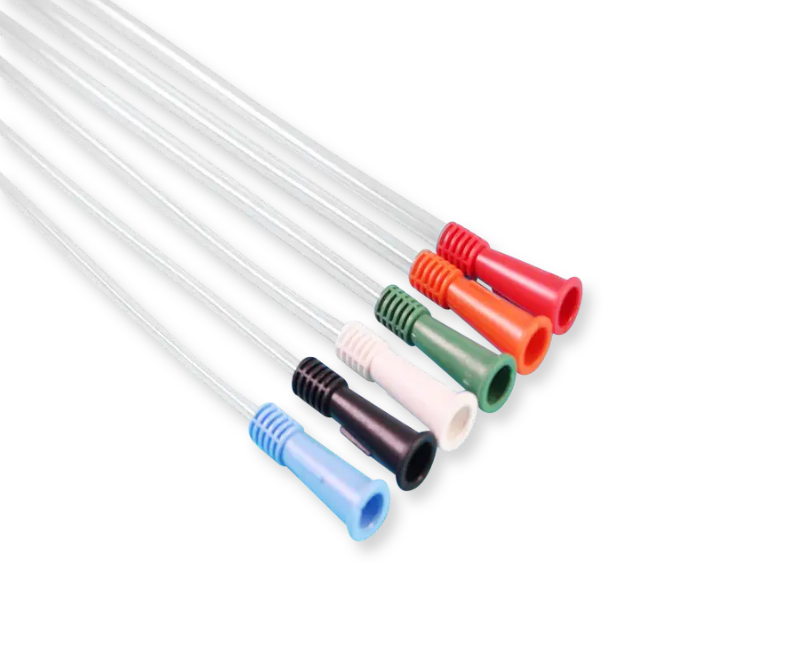TEl: +86-13148388090
Fax:+86-571-88616515
Must Know Intermittent Catheter Trends 2025
Author: admin / 2025-05-02With the growing demands from hospitals, field medics, and military emergency services, the intermittent catheter market is evolving fast. In 2025, several new technologies and market trends are reshaping how catheters are made, used, and purchased. Scroll to read the trends of intermittent catheters for 2025.

Key Technological Advancements in Intermittent Catheters
Hydrophilic-Coated Catheters Gain Traction
Hydrophilic coatings reduce friction during insertion, improving patient comfort and minimizing trauma. These catheters are especially useful in long-term catheterization and field care, where patients may need quick and less painful access.
In 2025, intermittent catheter manufacturers are integrating advanced hydrophilic technology with PVC-free materials to meet the rising demand for low-irritation and environmentally safer products.
DEHP-Free PVC Is the New Standard
DEHP (a plasticizer linked to health concerns) is being rapidly phased out. Catheters made with DEHP-free PVC offer a safer, flexible, and biocompatible option, especially valued in pediatric, military, and elderly care settings.
At our facility, we offer OEM intermittent catheters with:
-
DEHP-free PVC, soft yet firm.
-
Bullet-shaped tip for smoother insertion and reduced resistance.
-
Polished staggered drainage eyelets for better urine flow.
Compact and Pre-Lubricated Designs for Emergency Use
Foldable, single-use, pre-lubricated intermittent catheters are in high demand, particularly in military operations, disaster zones, and ambulatory surgical centers. These compact kits ensure fast deployment, sterile conditions, and minimal preparation time in the field.
Growing Market Demand Across Segments
Hospitals and Specialty Clinics Lead Market Share
As of 2024, hospitals and specialty clinics represented over 44% of global intermittent catheter usage. Their continued dominance in 2025 is fueled by:
-
Increased surgical procedures
-
Elderly care demand
-
Neurological and bladder dysfunctions
Hospitals are choosing male intermittent catheter designs with smoother eyelets and advanced tips for post-op recovery and neuro-urological care.
Military and Tactical Medical Demand on the Rise
In war-torn regions and military deployments, catheterization remains essential for treating spinal injuries and urinary retention under pressure. Medical buyers in these sectors prioritize:
-
Reliable catheter suppliers
-
Compact catheter kits
-
Sterile, field-ready units
The U.S. Department of Defense and international humanitarian teams are boosting procurement from OEM catheter manufacturers offering bulk, rapid-delivery solutions.
Home Care and VA Clinics Expand Usage
Chronic care at home continues to grow, especially for veterans and patients managing neurogenic bladder, spinal cord injuries, and prostate conditions. Demand is increasing for:
-
Easy-to-handle intermittent catheters
-
Coated, single-use options
-
Discreet packaging for home delivery
OEM Manufacturing Creates New Business Opportunities
OEM partners that supply intermittent catheters benefit from:
-
Custom branding
-
Flexible volume orders
-
Regional adaptation (U.S. / E.U. standards)
-
Competitive pricing and fast logistics
Whether targeting hospital systems, home care suppliers, or military procurement agents, an experienced catheter supplier can support rapid scale-up and long-term contracts.
Regulatory and Reimbursement Outlook in 2025
In the U.S., Medicare and Medicaid continue to reimburse intermittent catheter use under specific medical necessity codes. The Affordable Care Act's extension of durable medical equipment (DME) coverage keeps this segment stable.
Additionally, FDA guidance for catheter safety, sterility, and DEHP elimination is pushing innovation and supporting trustworthy OEM partnerships.
Final Thoughts
To succeed in 2025's intermittent catheter market, buyers need dependable, modern products designed for clinical efficiency and patient comfort. OEM suppliers that deliver safe, innovative, and field-ready solutions will stay ahead in hospitals, clinics, and tactical medical units alike.
Need a reliable OEM catheter supplier? We offer custom-made intermittent catheters with DEHP-free PVC, advanced tips, and polished drainage eyelets—perfect for hospitals, military units, and emergency responders. Contact us today to discuss your next bulk order.
- Bladder Health Guide: Understanding Overactive Bladder (OAB) and Practical Management Tips
- Bladder Health Essentials: Preventing and Managing Incontinence
- Bladder Health Awareness Month: Protecting Your Bladder & Managing Urinary Incontinence
- How to Choose a Reliable Nasopharyngeal Airway Supplier: A Deep-Dive Procurement Analysis



